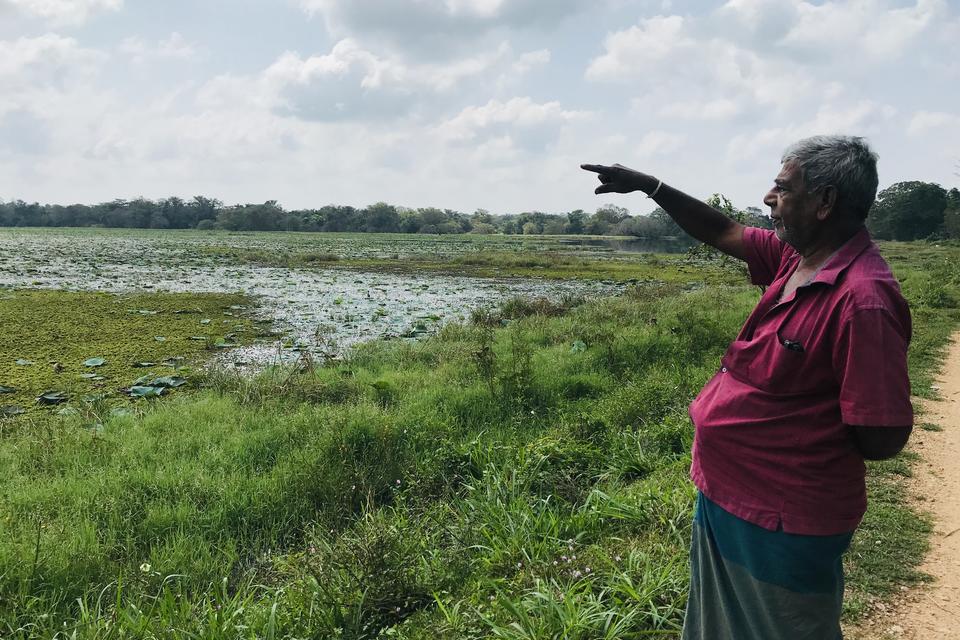An ancient water management system in Sri Lanka is being revived - here’s why
- From
-
Published on
11.10.22
- Impact Area

Several centuries ago, as populations expanded into the dry zone of Sri Lanka, efficient water storage became a high priority. Most rivers and streams found in the country’s dry zone are seasonal, emerging only during the monsoon season with their flow dependent on the amount of rainfall received. The resourcefulness of ancient communities led to the creation of Village Tank Cascade Systems (VTCS) or Ellangawa (made up of the Sinhalese words ‘ellan’, meaning hanging and ‘gawa’, meaning one after the other).
VTCS consist of an intricate network of small to very large tanks (or reservoirs) connected through a series of canals. The tanks, which store water from seasonal streams, each have a specific purpose. For example, the village tank, which all other tanks in the system drain into, is used for irrigation, as well as other community activities, while the ‘water hole’ is constructed for the trapping and deposition of silt. When fully functional and well managed, the tanks provide villages in the area with a year-round water supply, thus helping the surrounding landscape and communities to thrive.
While these ancient irrigation systems still function as a crucial element in supplying water for agriculture, they have other significant functions.
Related news
-

Integrating Climate Security into the Future of UN Peacekeeping in Africa
Ibukun Taiwo30.06.25-
Climate adaptation & mitigation
Explicit mentions of climate security have been removed or weakened in recent UN mandates. For…
Read more -
-

Harnessing digital tools in securing soil health for Africa’s food future
Sehlule Muzata27.06.25-
Climate adaptation & mitigation
-
Environmental health
-
Nutrition, health & food security
-
Poverty reduction, livelihoods & jobs
Nairobi, 27 June 2025 (IITA) - As it marks its first anniversary, the Regional Hub…
Read more -
-

Driving Rwanda’s Agricultural Sector Climate Resilience Through Innovative Business
The Alliance of Bioversity International and the International Center for Tropical Agriculture (CIAT)27.06.25-
Climate adaptation & mitigation
Rwanda’s agriculture is integral to its economy, and its reliance on rain-fed farming systems make…
Read more -
